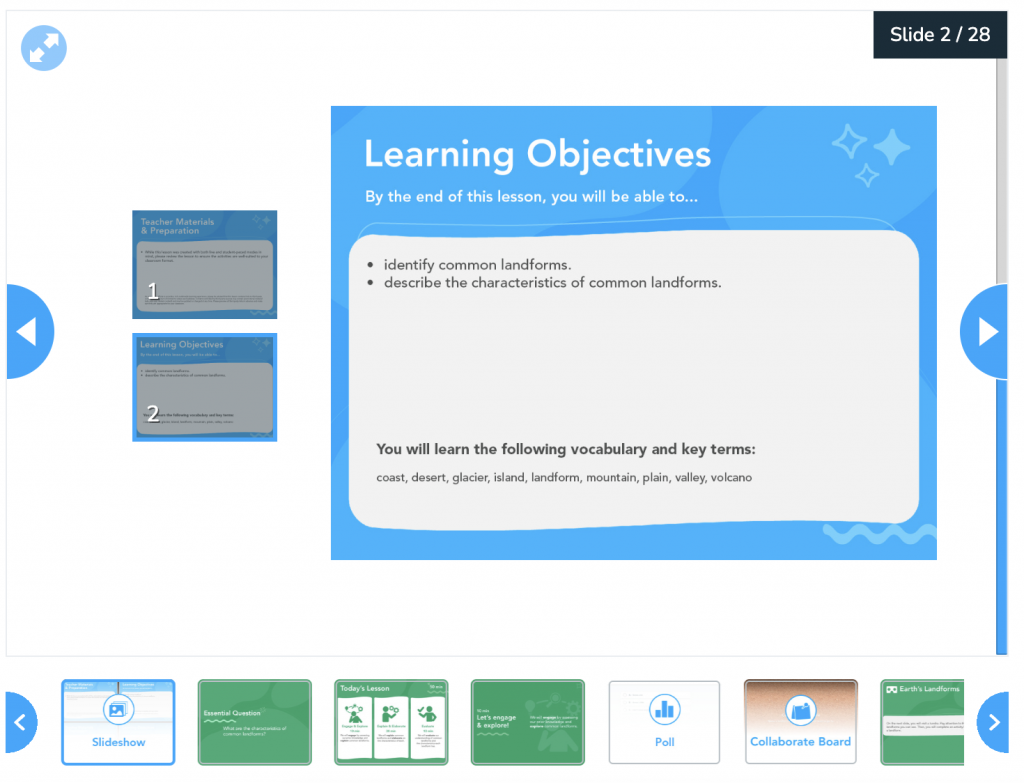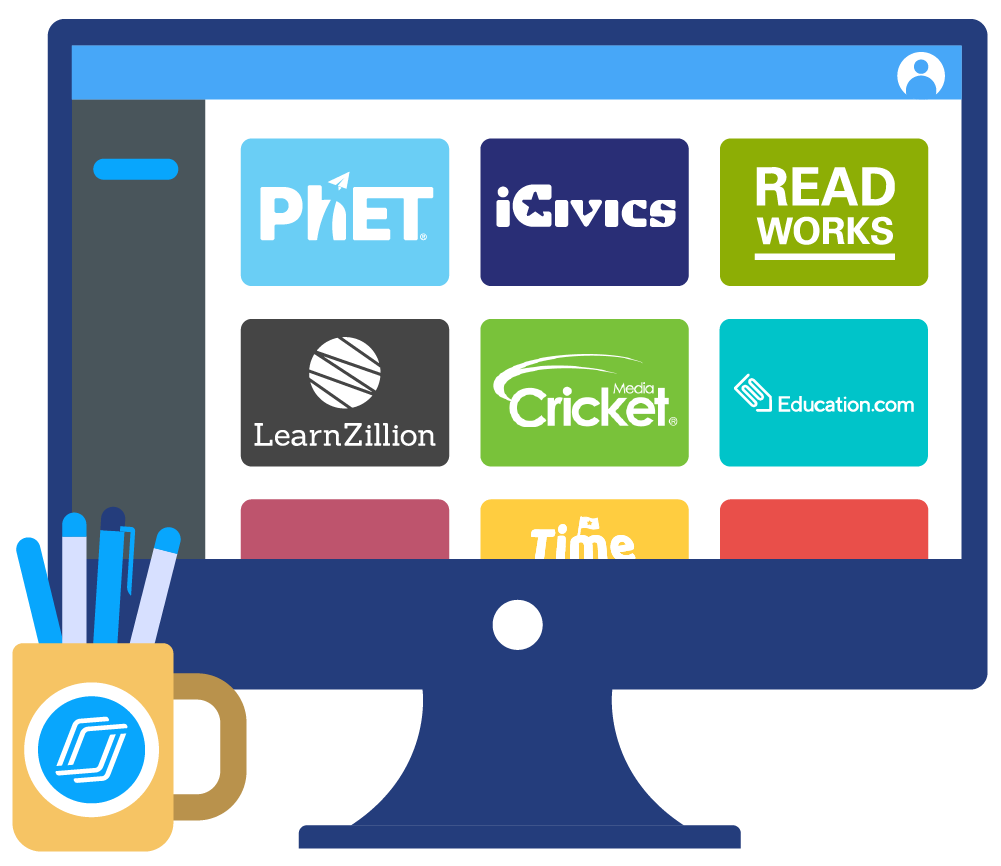
Nearpod’s focus on quality lesson content
Nearpod’s ever-expanding content library currently includes over 20,000 ready-made lessons, activities, and videos. Abounding not just in quantity but—crucially—in quality too, Nearpod’s content is trusted by teachers and beloved by students! Keep reading to learn how the Nearpod team ensures instructional quality across every lesson.
Foster a love of learning in every student with Nearpod. Teachers can sign up for free below to access and create interactive lessons. Administrators can schedule a call with an expert to unlock the full power of Nearpod for schools and districts.
Already have a Nearpod account? Log in now to start exploring our lessons!
Nearpod’s focus on quality lesson content
Created by our in-house content development team of former educators and experts, our lessons are designed with a focus on quality. You might be wondering exactly how the Nearpod content team defines “quality” when it comes to educational resources. And how are these lessons created and vetted? To answer that, first and foremost, we point to our three pedagogical principles.
Nearpod’s pedagogical principles
Nearpod’s content is rooted in these three core beliefs. These three principles guide every content development project and are at the core of how we define quality here at Nearpod.
Principle 1: Active learning
We believe active learning can transform students’ educational experience and improve academic outcomes.
Principle 2: Rigorous, scaffolded content
We believe rigorous and scaffolded content can accelerate achievement by helping raise expectations for all learners.
Principle 3: Formative assessments and feedback opportunities
We believe formative assessments and feedback opportunities empower students to learn and teachers to teach.
Types of Nearpod lessons
Before we dive into how we create and review our lessons, you might want to know a bit more about the kind of content you can find in the Nearpod library.
Every new lesson project, or “series,” is created for its own specific instructional purpose. Sometimes, we partner with a publisher to achieve that purpose. That’s why many Nearpod lesson series feature curated content from one of our many trusted publishing partners. Thanks to partnerships with organizations like iCivics and NASA, our team of lesson writers can leverage Nearpod’s interactive lesson-building platform to create a learning experience around the publishing partner’s curated videos, weblinks, activities, and more.
There are also many thousands of Nearpod lessons in the library created entirely by the Nearpod team. You can check out Nearpod’s popular Core Subject lesson series as one great example. Here, we’ve leveraged Nearpod’s interactive lesson-building platform to create a learning experience, creating and writing much of the lesson content ourselves without a partnership.
In both instances—whether we’re working with a publishing partner or producing a Nearpod team lesson series—the same processes and guidelines are in place to ensure quality. Key to this process are our multiple rounds of review.
Learn more about how you can find quality lessons for your classroom in the Nearpod Library!
How lessons are reviewed
Every Nearpod lesson, whether created with a publishing partner or not, receives multiple rounds of review. There are at least two main review stages:
Review 1: Learning Experience Design
In this first review stage, we focus on the instructional quality of the resource. Does the lesson achieve its stated learning objectives? Is it appropriate for the grade level? Is it standards-aligned? Does it reflect our pedagogical principles? We’ll give much more detail on the Learning Experience Design stage below, but it’s worth noting that this stage can take a few rounds of back-and-forth as a learning experience reviewer works with a lesson writer through drafts and revisions!
Review 2: Editorial
After ensuring the quality, it’s time for our second stage of review: editorial. Now, an editorial reviewer steps in to focus on grammar, usage, punctuation, spelling, and more. We want to be sure our content is clear and accurate, and that nothing distracts or competes for students’ attention!
In addition to these two stages, we might also enlist additional reviewers, like fact-checkers, subject matter experts, or consultants, to partner with us on specific elements that fall outside of the two stages above. We always welcome what we like to call that “extra set of eyes” on a lesson!
Lesson quality at Nearpod
As noted above, every Nearpod lesson receives a review for quality. The Nearpod content team refers to this as the Learning Experience Design review, or LXD for short! Our LXD reviewers receive consistent training and guidelines so that we’re all looking out for the same range of elements and asking the same questions that guide our feedback. Here’s a summary of a few of the major categories and questions that guide our LXD review.
Guidelines for Learning Experience Design

- Standards alignment: Does the lesson teach the aligned standard(s) thoroughly and at the appropriate level of rigor?
- Learning objectives: Are the lesson’s stated learning objectives aligned to the standards? Does the lesson achieve its stated objectives? Does it provide data or evidence of student achievement on each objective?
- Lesson structure: Is the lesson sequenced logically, reflecting an understanding of depth of knowledge and Bloom’s taxonomy?
- Grade appropriateness: Does the lesson include grade-level appropriate language, content, and activities?
- Nearpod interactive activities: Our reviewers check that all Nearpod interactive activities follow our internal lesson writer guidelines. These include specifics about which activity type to use for which instructional purpose and how to properly frame and design each activity to maximize engagement and learning.
- Multimedia: Are the multimedia experiences included in the lesson framed properly with background knowledge and necessary context?

- Vocabulary: Are necessary key words and vocabulary defined for students?
- Visual design: Are design elements (color, bolding, icons, etc) used in a meaningful way to serve the instruction without distracting?
- Relevance: Do examples used in the lesson showcase real-world connections for student learning? Are these examples relevant, interesting, and representative of the intended grade level?
- Language, tone, and representation: Does the lesson adhere to our internal guidelines for tone, sensitivity, representation, and inclusion? We want our lessons to be windows and mirrors for students so that they can see themselves reflected and learn about the wider world too!
One final review before publishing
After a lesson passes through the two main stages of review—that is, both learning experience design and editorial—it’s ready for publishing … almost!
We do one final stage of quality review within Nearpod, clicking through each and every piece of a lesson to make sure everything is functioning as expected!
Start using Nearpod’s high-quality lessons
Teachers rely on Nearpod for content they can trust, and with the plethora of resources in the library, quality is of the utmost importance. Created and reviewed by experts, our lessons reflect our commitment to creating content you can trust.
Foster a love of learning in every student with Nearpod. Teachers can sign up for free below to access and create interactive lessons. Administrators can schedule a call with an expert to unlock the full power of Nearpod for schools and districts.
Already have a Nearpod account? Log in now to start exploring our lessons!

Rebekah Bergman is the Senior Director for Content Development at Nearpod.




